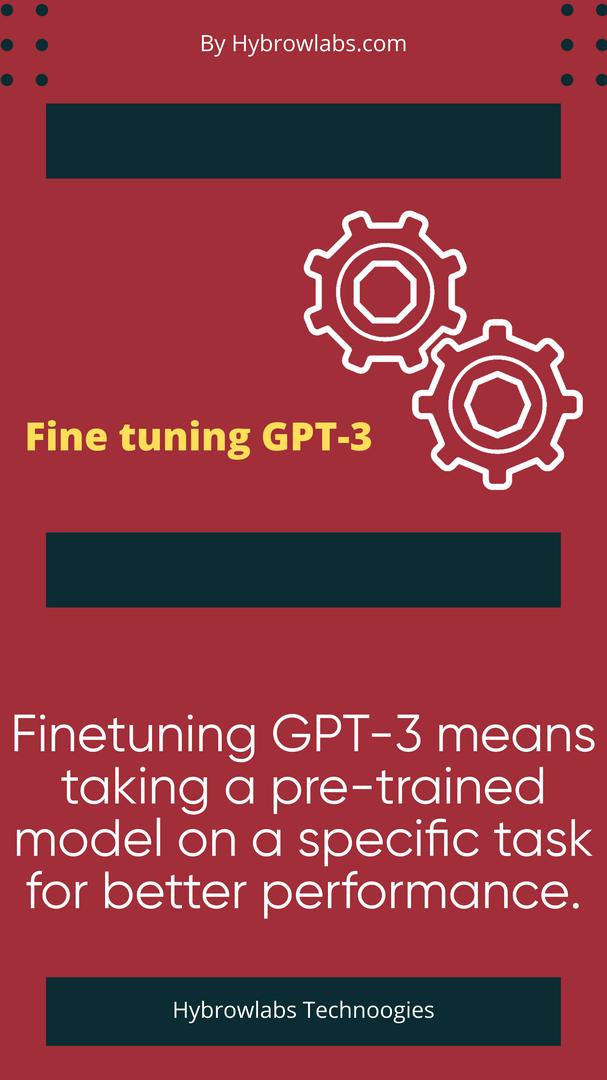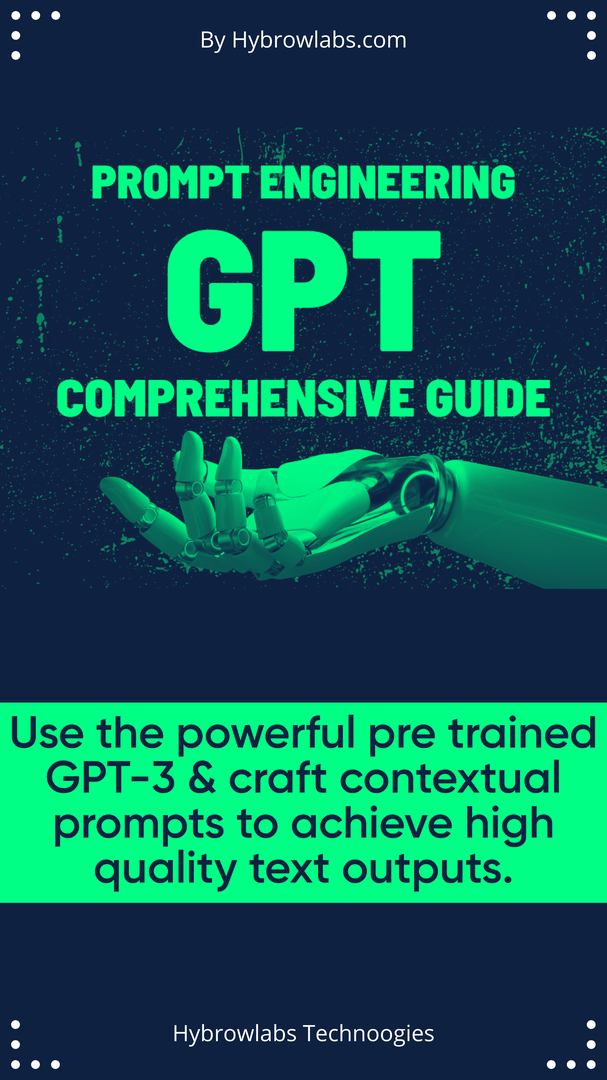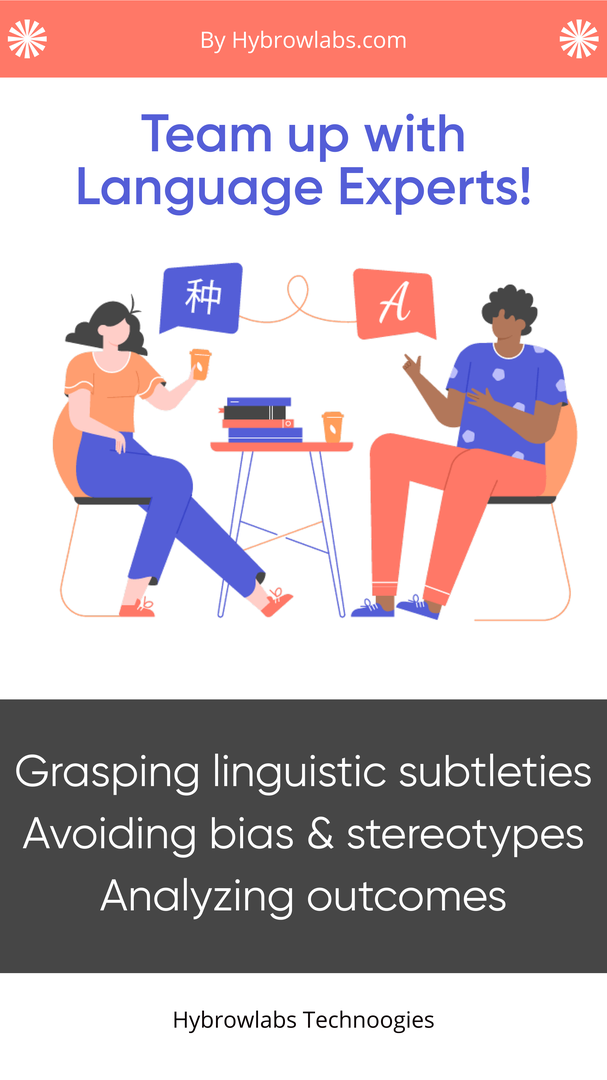Finetuning GPT-3 has become a popular tool in the AI & natural language processing (NLP) community, with applications in a range of industries such as healthcare, finance & marketing. However, there are common misconceptions surrounding this tool, which can lead to suboptimal results. In this article, we will demystify finetuning GPT-3 by sharing tips & common misconceptions.
What is finetuning GPT-3?

GPT-3 is a natural language processing model that is trained on a massive dataset & can generate human-like text. Finetuning GPT-3 involves taking a pre-trained model & retraining it on a specific task or dataset. This process allows the model to adapt to a specific task & improve its performance.
Importance of Understanding Finetuning Tips & Misconceptions:
Understanding the tips & misconceptions surrounding finetuning GPT-3 is crucial for achieving optimal results. By following the correct process & avoiding common pitfalls, users can improve the quality of the generated text & reduce the amount of time & resources required for training.
Tip 1: Start with normal GPT-3 & prompt engineering:

What is Plain GPT-3?
Plain GPT-3 refers to the pre-trained version of the model, which has already learned the patterns of human language. This model is capable of generating text on a wide range of topics & can be used as a starting point for fine-tuning.
Importance of Prompt Engineering:
Prompt engineering involves crafting prompts that provide the necessary context for the model to generate relevant text. It is a critical component of finetuning GPT-3 & can significantly impact the quality of the generated text. By starting with normal GPT-3 & prompt engineering, users can ensure that they are building on a strong foundation & generating high-quality text. Additionally, this approach can save time & resources by reducing the need for extensive fine-tuning datasets.
Tip 2: Building fine-tuning datasets is a hundred times more effort than prompt engineering:

When it comes to fine-tuning GPT-3, building datasets for the purpose of fine-tuning can be a challenging & time-consuming process. This is why we advise you to start with plain GPT-3 & prompt engineering, rather than immediately building a fine-tuning dataset.
What are fine-tuning datasets?
Fine-tuning datasets are collections of text data that are used to fine-tune GPT-3. Fine-tuning involves training GPT-3 on a specific task or domain, such as generating poetry or summarizing news articles. The fine-tuning dataset is used to teach GPT-3 how to perform the task or understand the domain by providing it with relevant examples.
Building a fine-tuning dataset can be a time-consuming & labor-intensive process. It involves identifying & collecting relevant text data, cleaning & organizing the data & formatting it in a way that is suitable for fine-tuning GPT-3. This process can take weeks or even months, depending on the size & complexity of the dataset.
Advantages of starting with Plain GPT-3:
Starting with plain GPT-3 has several advantages over building a fine-tuning dataset. For one, it saves time & effort. Plain GPT-3 is already a powerful language model that can generate high-quality text in a variety of domains & styles. By using prompt engineering techniques, it is possible to guide GPT-3 to generate text that is more specific to a particular task or domain, without the need for a fine-tuning dataset.
Another advantage of starting with plain GPT-3 is that it allows for more experimentation & exploration. By starting with a broad prompt & gradually narrowing it down, it is possible to explore different possibilities & generate a wide range of outputs. This can be useful for tasks that are less well-defined or for which there is not yet a suitable fine-tuning dataset available.
Tip 3: Use natural language separators or demarcators:
What are Natural Language Seperators?
Natural language separators or demarcators are specific words or phrases that can be used to identify where the prompt ends & the completion begins. These separators are critical when it comes to fine-tuning GPT-3, as they help to ensure that the model generates accurate & relevant completions based on the prompts. Without natural language separators, the model may generate irrelevant & nonsensical completions that do not align with the intended prompts.
Importance of using Natural Language Separators to identify prompt & completion:
There are several reasons why using natural language separators is important in fine-tuning GPT-3. These include:
- Improved accuracy: By using natural language separators, you can ensure that the model generates completions that are more accurate & relevant to the prompts you provide.
- Consistency: Natural language separators help to ensure consistency in your prompts & completions, making it easier to fine-tune the model & achieve the desired results.
- Efficiency: By using natural language separators, you can save time & effort in the fine-tuning process, as the model can more easily identify where the prompt ends & the completion begins.
- Better understanding: Using natural language separators can also help you gain a better understanding of how the model generates completions, as you can more easily see the relationship between the prompts & the generated text.
Tip 4: Keep in Mind that Fine-Tuning is Transfer Learning:

What is transfer learning?
Transfer learning is a technique in machine learning where a model trained on one task is used for another related task. In other words, transfer learning allows a model to leverage its existing knowledge & experience from one domain to another. In the case of GPT-3, fine-tuning is a form of transfer learning since the model has already been trained on a massive amount of data & can leverage that knowledge to perform specific tasks.
Benefits of using GPT-3's existing learning for fine-tuning:
a) Improved performance:
Fine-tuning allows you to leverage the massive amount of knowledge GPT-3 has already learned, which can significantly improve performance on specific tasks.
b) Reduced training time:
Since GPT-3 has already learned a lot about natural language processing, fine-tuning can help reduce the time & resources required to train a model from scratch.
c) Reduced data requirements:
Fine-tuning can also help reduce the amount of data required for training since the model is already pre-trained on a large corpus of text data.
d) Flexibility:
Fine-tuning allows you to customize GPT-3 for specific tasks, making it a more flexible tool for natural language processing.
e) Cost-effectiveness:
Since fine-tuning requires less data & training time, it can be a more cost-effective solution compared to training a model from scratch.
Tip 5: Have a Team that Includes Experts Who Understand the Process:

When it comes to using GPT-3 for fine-tuning, it's essential to have a diverse team that includes someone who understands the language. Language experts, such as English majors, philosophers, or psychologists, can help immensely in the fine-tuning process. Here are some reasons why:
1. Understanding the nuances of language:
A language expert can identify subtle differences in language & provide context that a computer algorithm may miss. They can help refine prompts to ensure they're clear & concise, which is critical for achieving accurate results.
2. Avoiding bias & stereotypes:
Language experts can help identify language that may be biased or stereotypical, which can help ensure that fine-tuning data sets are inclusive & representative.
3. Interpreting results:
Language experts can help interpret the results of fine-tuning experiments, providing insights into why certain prompts may have yielded specific results. This can be especially valuable when fine-tuning GPT-3 for specific use cases, such as customer service or chatbots.
Examples of language experts who can help include linguists, communication experts & content creators. These professionals can help fine-tune GPT-3 for a wide range of applications, including marketing copy, product descriptions & chatbot interactions. By including language experts on your team, you can ensure that your fine-tuning efforts are as accurate & effective as possible.
What are some Common misconceptions about Fine-Tuning GPT-3?
GPT-3 is a powerful language model that can generate human-like text, but it is often misunderstood. One common misconception is that fine-tuning GPT-3 is easy & straightforward. However, this is not the case & it requires significant effort & expertise to get the desired results. Another misconception is that fine-tuning GPT-3 will always improve the model's output, but this is not necessarily true. Fine-tuning can sometimes lead to overfitting, resulting in the model being unable to generalize to new data. Lastly, many people believe that GPT-3 is biased or racist, but this is not true. The model has been trained on a diverse range of texts & is not inherently biased.
Importance of dispelling misconceptions:
It is important to dispel these misconceptions as they can lead to incorrect assumptions about the capabilities & limitations of GPT-3. This can result in wasted time & resources when trying to fine-tune the model or develop applications using it. By understanding the real challenges of fine-tuning GPT-3 & the true nature of its biases, developers & researchers can use the model more effectively & responsibly.
Conclusion:

In summary, fine-tuning GPT-3 can be a challenging task, but it can also lead to powerful and impactful applications. Starting with the standard GPT-3 model and employing prompt engineering can save significant effort when building fine-tuning datasets. Utilizing natural language separators and understanding the principles of transfer learning can help achieve improved results. Having a language expert on the team can bring valuable insights to the fine-tuning process. It is also important to dispel common misconceptions about GPT-3, such as the ease of fine-tuning or its inherent biases.
To get the best results when fine-tuning GPT-3, it is essential to have a clear understanding of its capabilities and limitations. This includes being familiar with the various tips and techniques discussed in this article, as well as being aware of common misconceptions. Fine-tuning GPT-3 can be a rewarding experience that can lead to groundbreaking applications, but it requires patience, expertise, and a willingness to learn and adapt. By leveraging the expertise offered by Hybrowlabs Development Services, you can ensure a successful fine-tuning process and achieve optimal results.
Frequently Asked Questions
1. What is fine-tuning GPT-3?
Fine-tuning GPT-3 involves training the model on a specific task or dataset to improve its performance on that particular task.
2. Can anyone fine-tune GPT-3?
Yes, anyone with access to GPT-3 can attempt to fine-tune it, but it requires significant expertise & effort to achieve good results.
3. Is GPT-3 biased or racist?
No, GPT-3 is not inherently biased or racist. However, it can exhibit biases based on the data it was trained on.
4. How can I improve the results of fine-tuning GPT-3?
Some tips for improving fine-tuning results include starting with normal GPT-3 & using prompt engineering, using natural language separators & leveraging transfer learning.
5. What kind of team should I have for fine-tuning GPT-3?
It is helpful to have a team that includes individuals with expertise in languages, such as an English major, philosopher, or psychologist, as they can provide valuable insights into the nuances of language.






a3dc85.jpg)
.jpg)
fd8f11.png)


.jpg)
.jpg)